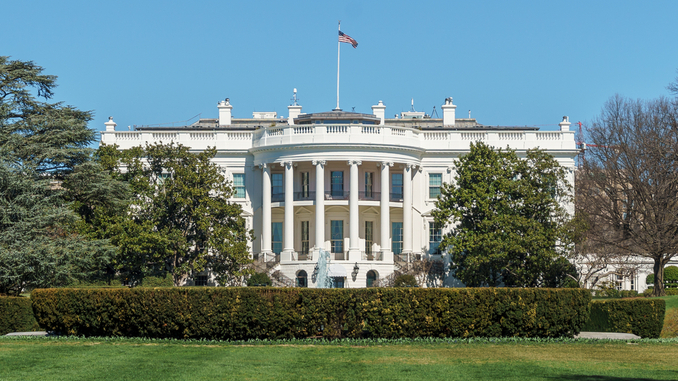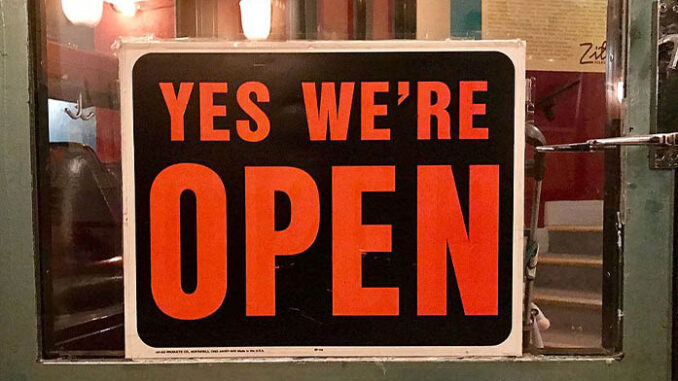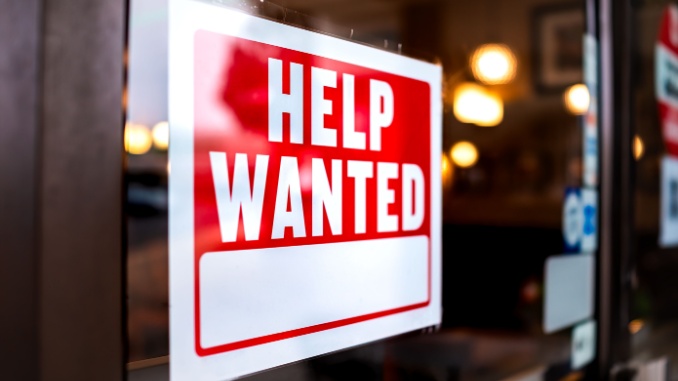
by Jonathan Eberle | Oct 11, 2025 | Economy, News
By Jonathan Eberle |
Arizona State Senator David Farnsworth, chairman of the Senate Appropriations and Transportation Committee, is doubling down on his commitment to improving Arizona’s transportation network, emphasizing both immediate roadway repairs and longer-term investments in next-generation infrastructure.
Farnsworth noted that Arizona’s rapid population growth is putting added strain on highways and local roads, making safety and upkeep a pressing priority. His plan, he said, reflects a blend of conservative fiscal principles and forward-looking technology, designed to strengthen connectivity across the state while preparing for future mobility needs.
A central component of that vision is Advanced Air Mobility (AAM) — a developing technology that uses electric aircraft, sometimes called “air taxis,” capable of vertical takeoff and landing for short-distance travel. Advocates say AAM could ease traffic congestion, expand emergency response capabilities, and connect rural communities more effectively. Farnsworth has supported legislative work on AAM since 2024, with an eye toward balancing innovation with public safety and regulatory clarity.
Other states are already moving toward implementation. For example, Archer Aviation is slated to provide official air taxi services for the 2028 Olympic Games in Los Angeles. Farnsworth said Arizona must be proactive in keeping pace with such developments.
The senator also pointed to autonomous vehicle testing in Arizona, particularly self-driving ground taxis, as a model for how advanced technology can be integrated into daily life. Together with AAM, he said, these tools represent the next chapter of transportation policy.
“The work begins by repairing what is broken, followed by building what comes next,” Farnsworth said. “Advanced Air Mobility and autonomous vehicles are no longer concepts of the future—they are active technologies with real-world applications. My job is to ensure Arizona stays ahead of the curve, not behind it.”
Farnsworth stressed that his focus remains on practical investments and collaboration with communities, technology leaders, and policymakers. His goal, he said, is a transportation system that is modernized, fiscally responsible, and designed to serve Arizona residents well into the future.
Jonathan Eberle is a reporter for AZ Free News. You can send him news tips using this link.

by Matthew Holloway | Oct 5, 2025 | Economy, News
By Matthew Holloway |
The White House Council of Economic Advisers (CEA) released a memo on Friday, detailing the state-level impacts of the government shutdown imposed by congressional Democrats and detailing the projected effects. The effects on Arizonans could be profound if the shutdown is not resolved quickly.
According to the Council of Economic Advisers, Arizona could face a decline of $296 million in Gross State Product each week or approximately $1.3 billion per month, and an increase in unemployment of about 1,000 people. Around 58,000 federal employees, or about 1.8 percent of Arizona’s workforce, could face furlough without pay.
For Arizona seniors and those who receive SSI disability benefits, they will be “likely delayed for those that(who) receive their Social Security benefits by check instead of direct deposit,” per the CEA. In Arizona, approximately 6,200 seniors currently receive their benefits by check.
If the shutdown extends beyond 30 days, the Supplemental Nutrition Assistance Program (SNAP) benefits of 887,000 total enrollees, including 344,000 children, could be impacted.
However, the council warned that families relying on WIC are at greater risk of disruption, saying, “Due to the government shutdown, federal funding for the Women, Infants, and Children (WIC) program stops immediately and becomes reliant on very limited local contingency funding. If the government shutdown is prolonged, those reserves are likely to run out by the end of the first week. In Arizona, there are approximately 153,000 WIC recipients who rely on the program for nutritional support for themselves and their children.. “
Seventy-six million dollars in small business loans, such as those made available to the victims of the Dragon Bravo and White Sage Fires, could also be delayed. Federal contract spending is expected to lose approximately $560 million should the shutdown persist for one month. Overall, the council warns that Arizona could lose $15 billion in GDP each week the government is shut down — a crisis that will ripple across every state.
Kush Desai, a White House Spokesperson, said in a statement emailed to AZ Free News, “President Trump and Republicans remain committed to ensuring families receive the support they deserve. Sadly, Democrats have chosen to shut down the federal government for political purposes…The Democrats’ shutdown is hurting the American people and letting millions of Americans’ livelihoods hang in the balance. Democrats need to vote on the clean, bipartisan funding extension.”
In a press release issued Thursday, Arizona Congressman Abe Hamadeh (R-AZ08) explained that Congressional Democrats are ultimately responsible for this shutdown. He stated, “This nonpartisan funding bill, passed 13 times under Biden, was rejected by Democrats solely due to their opposition to the new president. Their shutdown halts critical services like benefits for Veterans, military pay, and national security programs.”
Hamadeh added, “As the White House points out, the Democrats proposal would require Medicaid to pay more for emergency care provided to illegal aliens than it does for American patients who are disabled, elderly, or children.’ That is unacceptable. We can no longer afford to fund the results of the Biden Administration’s broken border scheme. Americans deserve a functioning government, and House Republicans delivered by voting to keep it open. Yet, Democrats voted to shut it down, prioritizing free healthcare for illegal immigrants over American citizens’ needs.”
Matthew Holloway is a senior reporter for AZ Free News. Follow him on X for his latest stories, or email tips to Matthew@azfreenews.com.

by Staff Reporter | Sep 29, 2025 | Economy, News
By Staff Reporter |
A series of new laws taking effect are anticipated to raise Arizona’s economic competitiveness.
The Arizona Chamber of Commerce & Industry (Arizona Chamber) highlighted six new laws as giving the state a beneficial boost in economic performance against other states.
These laws aim to make it feasible for international headquarters to build on-site workforce housing and support services (Senate Bill 1543), permit utilities to refinance infrastructure investments through securitization (House Bill 2679), allow Chase Field renovations without increasing taxes (House Bill 2704), make it feasible for advanced air mobility systems such as drone deliveries and air taxis (Senate Bill 1307), require utilities and public power entities to implement wildfire mitigation plans (House Bill 2201), and bars foreign entities from funding lawsuits while limiting outside funding to third-party litigation (Senate Bill 1215).
Dozens of states are working together to create a uniform approach to allowing advanced air mobility, along with the Federal Aviation Administration. Over 30 states are members of the Advanced Air Mobility Multistate Collaborative (AAMMC), formed in 2023 with eight to 10 member states. Arizona is member to the organization leading AAMMC, the National Association of State Aviation Officials.
In addition to raising awareness of the new laws it backs, the Arizona Chamber also releases public reports of failed bills it believed would harm the state’s economy. The chamber announced their 2025 report is forthcoming.
Arizona Chamber President and CEO Danny Seiden stated that the six featured laws would retain corporate interest in the state by implementing necessary reforms and new pathways to growth.
“As these laws take effect, Arizona employers can count on policies that reflect their priorities,” said Seiden. “From keeping vital economic drivers in Arizona, to passing commonsense energy reforms that will deliver long-term stability and affordability, to supporting global companies, these are the kinds of policies that keep Arizona competitive and attractive for investment.”
The legislature also passed other laws anticipated to boost the economy, some of which Governor Katie Hobbs also approved from the Republican-controlled legislature despite a historic veto record (nearly 200 bills this year, compared to her previous historic record of over 140 in 2023).
One such law promises to further protect Arizona from regulatory capture by monopoly-controlled utilities (House Bill 2518). The legislation prohibits Arizona Corporation Commission (ACC) members from accepting employment with the utilities under their regulation. Not all ACC members were pleased with the legislation, namely ACC Chairman Kevin Thompson.
Chair Thompson was the subject of an ethics claim filed by the Energy Policy Institute earlier this year, as first reported by the Arizona Republic. The institute alleged a conflict of interest regarding the relationship between Thompson’s consulting firm and utilities.
Another law will ensure construction crews may work in the early morning hours in the summers by prohibiting municipalities and counties from enacting or enforcing noise ordinances, rules, or regulations prohibiting general construction activities during certain summertime hours (Senate Bill 1182).
And another law requires municipalities to give affected businesses at least 60 days’ notice before voting on tax increases (House Bill 2119).
The legislature also chose to sunset the Low Income Housing Tax Credit program rather than renew. Critics of the program blame lax policies and procedures for the Department of Housing’s loss of around $2 million to a wire fraud scam in 2023.
AZ Free News is your #1 source for Arizona news and politics. You can send us news tips using this link.

by Jonathan Eberle | Sep 29, 2025 | Economy, News
By Jonathan Eberle |
Arizona added 700 nonfarm jobs in August, a modest increase that ranked the state 31st nationally in monthly job growth, according to a new analysis by the Common Sense Institute (CSI). Nationally, the U.S. economy gained 22,000 jobs, while 18 states recorded employment losses.
On an annual basis, Arizona showed stronger momentum, adding 41,400 jobs over the past year, a 1.29% gain that placed it 15th in the nation. However, CSI noted that the state has shed 15,100 jobs since April 2025, marking the second-highest nominal job loss in the country during that period and the fifth worst relative decline at 0.46%. Arizona’s unemployment rate remained at 4.1% in August, unchanged for six straight months. Labor force participation also held steady at 61.4%, below its pre-pandemic level of 62.2%.
Manufacturing led the way in August with 1,100 new jobs, a 0.6% increase that ranked Arizona third nationwide for monthly manufacturing growth. Despite the improvement, the sector remains down 1,100 jobs compared to last year. Mining and Logging posted the strongest year-over-year growth, adding 1,500 jobs, or 10.2%. By contrast, Leisure and Hospitality lost 0.6% of its workforce last month, while the Information sector continues to lag behind with a 2.7% year-over-year decline.
Average hourly wages in Arizona rose to $34.91, up 4.1% from August 2024. Adjusted for inflation, real wages increased 2.7% over the past year—outpacing the national average of 0.7%. Still, CSI’s report highlighted longer-term challenges: since April 2020, real wages in the state have fallen 4.3%.
Overall, the report points to a mixed picture for Arizona’s labor market: modest gains in key industries and wage growth, offset by lingering job losses since the spring and participation rates that remain below pre-pandemic levels.
Jonathan Eberle is a reporter for AZ Free News. You can send him news tips using this link.

by Jonathan Eberle | Sep 26, 2025 | Economy, News
By Jonathan Eberle |
Arizona’s housing market showed signs of cooling in the second quarter of 2025, but affordability challenges persist, according to a new analysis from the Common Sense Institute (CSI).
CSI’s Q2 Housing Affordability Report highlights a combination of falling home prices, slowing residential permitting, and a continuing housing deficit as factors shaping the state’s housing outlook.
Key findings from the report indicate that Arizona currently faces a housing shortage of 52,846 units, a 6.9% decline from 2024. Analysts say the reduction stems more from weakened buyer demand than from an increase in housing supply.
The average home price in the state remains $426,164—roughly $53,400 (14.3%) above what prices would have been if they had followed pre-pandemic trends. Despite recent price declines, households still need to earn $95,808 annually—or work 64 hours per month at the average wage—to afford a mortgage on the typical home.
The CSI report assigns Arizona a “C-” grade for housing in Q2 2025, noting continued affordability concerns and low permitting levels. Maricopa County maintained its “D” rating, while Pima County improved to a “B.” Residential permitting in Arizona is projected to approve 51,877 units this year, a 12.5% decrease from 2024 and the slowest pace since 2019. Experts note that the state needs between 60,000 and 75,000 new units annually to close the housing gap.
“Arizona’s housing market is cooling, but the relief many hoped for has not materialized,” said Zachary Milne, CSI Senior Economist and Research Analyst. “Prices are still far above pre-pandemic levels, mortgage costs remain burdensome, and new homebuilding is slowing at a time when the state already faces a significant housing deficit. Without a sustained increase in supply, affordability will remain out of reach for too many Arizonans.”
The report concludes that Arizona’s long-term housing challenges are driven by both elevated prices and insufficient construction. While the recent moderation in demand has provided some short-term relief, the underlying supply gap continues to affect affordability across the state.
Jonathan Eberle is a reporter for AZ Free News. You can send him news tips using this link.

by Jonathan Eberle | Sep 25, 2025 | Economy, News
By Jonathan Eberle |
Maricopa County has retained the highest possible credit rating. Standard & Poor’s Global Ratings affirmed its AAA rating with a stable outlook, signaling strong financial health amid broader economic challenges.
County officials say the rating reflects careful fiscal management and a solid economic foundation. According to Chairman of the Board of Supervisors Thomas Galvin, District 2, the AAA rating demonstrates that “Maricopa County is not only financially strong but fiscally responsible.”
The County operates well below its maximum property tax levy and carries no general obligation debt, a distinction rare for large counties. Officials note that these measures help reduce costs for residents while supporting strategic investments in infrastructure and public services.
The AAA rating reflects several factors, including:
- Conservative budgeting and prudent financial management.
- Healthy reserves that protect against economic uncertainty.
- A diverse local economy, with strong employment in government, education, health care, and aerospace.
- Taxpayer protection through levying nearly $270 million below the County’s maximum property tax capacity.
- Absence of general obligation debt, limiting taxpayer liabilities.
Maintaining the AAA rating also allows the County to borrow at lower interest rates, which can save millions of dollars on capital projects such as public safety facilities, technology upgrades, and infrastructure improvements. Officials say these savings benefit residents through enhanced services and lower costs.
The affirmation comes at a time when many counties nationwide face economic pressures, highlighting Maricopa County’s continued focus on long-term fiscal stability.
Jonathan Eberle is a reporter for AZ Free News. You can send him news tips using this link.






